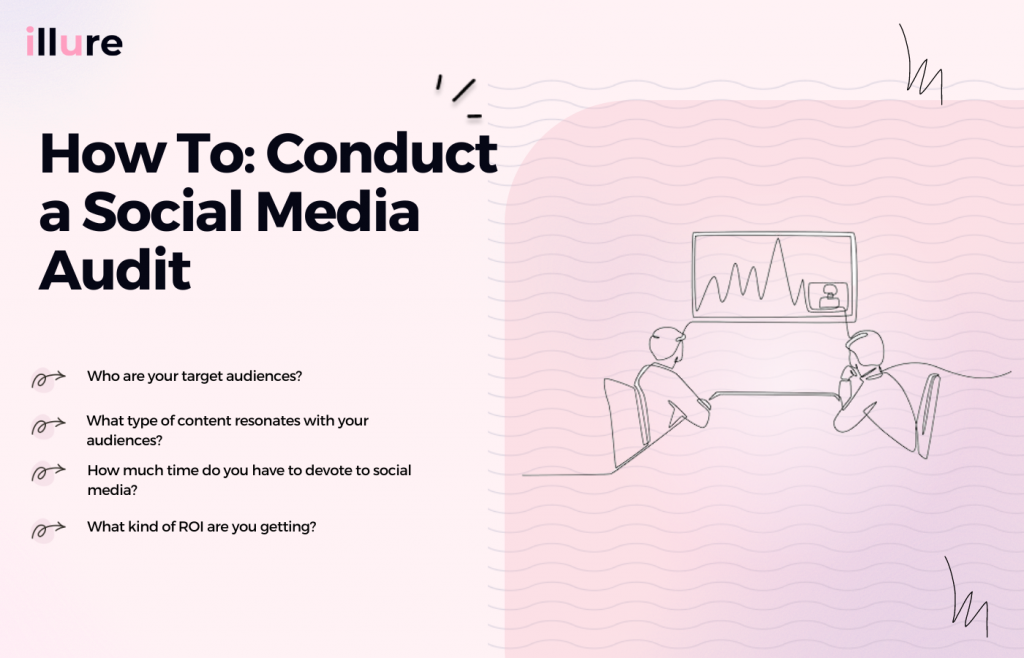
If you’re looking for an effective way to plan and schedule your content on social media, you should consider creating a social media calendar.
A social media calendar is an organized way to keep track of when and what you will be posting on each of your social media platforms. It can help you stay on top of your content strategy, saving you time and making it easier to track your progress. In this beginner’s guide, we’ll walk you through the basics of creating a social media calendar so you can get started right away.
Creating a social media calendar is an essential part of any successful content marketing strategy. It will help you to plan, organize, and track your content for all of your social media channels in an efficient and effective way.
Whether you’re just getting started with your social media efforts or looking to take them to the next level, this beginner’s guide to creating a social media calendar will help you get organized and stay on track.
What is a social media calendar?
A social media calendar is a document used to plan and organize your posts and campaigns for all of your social media platforms. It allows you to map out the content that you’ll be posting, when you’ll be posting it, and what the message will be. It ensures that you stay consistent with your content and messaging, making sure that your followers and potential customers know what to expect from you.
Using a social media calendar can help you stay organized and on track, so that you can better focus on creating high quality content that resonates with your target audience. With a social media calendar, you can easily schedule content ahead of time and measure the success of each post. This makes it easier to analyze what kind of content works best and allows you to optimize your future content accordingly. It also gives you the opportunity to review and adjust any posts or campaigns if needed.

Why should you use one?
A social media calendar is an essential tool for any business that wants to succeed on social media. It’s a way of planning and organizing your content in advance so that you can stay ahead of the curve and avoid wasting time trying to figure out what to post.
Using a social media calendar has many benefits, including:
- Increased Efficiency: A social media calendar helps you save time by allowing you to plan, organize, and schedule posts in advance. This eliminates the need for daily scrambling to come up with content ideas or worrying about what to post each day.
- Better Organization: Planning content in advance ensures that your posts are more organized and consistent. You can ensure that your posts are posted at the same time each day and that they are aligned with your brand messaging.
- Improved Time Management: With a social media calendar, you can focus on creating high-quality content instead of stressing about when to post it. You can also use it to plan ahead for special events or holidays so that you don’t miss out on any potential opportunities for engagement.
- Easier Content Creation: With a social media calendar, you can easily come up with ideas for content since you have the whole month planned out ahead of time. You can also develop themes or topics that you want to focus on each month which makes it easier to create content quickly and efficiently.
Overall, using a social media calendar will help you become more efficient, organized, and strategic in your content creation process. It’s an invaluable tool that will help you make the most out of your social media marketing efforts.
Decide your Social Media Objectives
When it comes to creating a social media calendar, it’s important to know what you’re hoping to achieve with your content. Before you begin creating your calendar, you should take the time to define your objectives and determine what your goals are. This could be anything from increasing brand awareness and website traffic to improving customer loyalty or boosting sales.
Once you have a clear idea of your goals, you can start to craft content that is specifically tailored towards achieving them. For example, if you’re looking to increase website traffic, you could create a series of posts that link back to your website and include call-to-actions that encourage people to click through. Alternatively, if you’re looking to boost engagement, you could create content around interactive elements such as polls and quizzes.
Defining your objectives is key when it comes to creating a successful social media calendar. It will help you stay focused and ensure that all of your content aligns with your desired outcomes. Plus, it’s a great way to measure the success of your campaigns and gauge how effective your efforts are.

How to create a social media calendar
Creating a social media calendar is a great way to plan and organize your content for any social platform. It will allow you to track the performance of your posts, better allocate resources, and engage with your followers in a more meaningful way.
Here are the steps you should take to create a social media calendar:
- Conduct a social media audit.
Start by evaluating your current social media activity and performance. Look at the types of content you post and the reach and engagement each post receives. This will help you identify what’s working and what could use improvement.
- Choose your social media channels and the content you’ll post.
It’s important to pick the right social media channels to focus on and decide what type of content you want to post. This includes the visuals, copy, and links you’ll use.
- Decide what your calendar should include.
Your calendar should include the platforms you’re using, the day and the time your posts will be published, links, graphics, videos, and copy. It should also include any topics or themes that you want to cover throughout the month.
- Use a social media calendar tool.
Using a calendar tool will make it easier for you to plan and manage your posts. You can find many options online including Google Calendar, CoSchedule, Hootsuite, Sprout Social, Buffer, and more.
- Track your engagement through monthly reporting.
It’s important to review your performance on a regular basis. This will help you determine which content is most effective so you can continue to improve your social media strategy.
Tips for using a social media calendar:
- Plan out your content ahead of time so that you don’t have to scramble at the last minute.
- Include images and other visuals to draw attention to your posts.
- Consider including links to other websites or blog posts to build an audience.
- Schedule posts in advance whenever possible so that you have time to respond to comments or questions from followers.
- Monitor the performance of your posts so that you can adjust your strategy as needed.
Work with Us
At Illure, we specialize in crafting quality social media content, social media ads and blog posts that capture attention and get results. Our team works closely with you to understand what makes your business unique and will develop custom strategies to boost visibility, generate leads, and increase conversions. Our team has the experience and knowledge to bring your brand to the next level. With our comprehensive services, we’ll work together to create an effective roadmap for boosting social media visibility and increasing organic traffic!

How To: Conduct a Social Media Audit
Conducting a social media audit is an important step in creating your social media calendar. A social media audit is essentially a review of all the platforms you’re using (or plan to use) to evaluate your current performance and get an overall view of your audience. This helps you to make sure you’re using the right channels for your brand.
When conducting a social media audit, there are a few key things to consider:
- Who are your target audiences? Analyze which platforms your audience is using most and decide which ones you should prioritize when creating content.
- What type of content resonates with your audiences? Look at the content you’ve posted in the past, what kind of engagement has it generated, and how can you use that data to create better content in the future?
- How much time do you have to devote to social media? Create realistic goals based on the time and resources you have available.
- What kind of ROI are you getting? Track the progress of your social media campaigns and use that data to inform your future strategies.
By taking the time to conduct a thorough social media audit, you will be able to create a comprehensive and effective social media calendar that suits your brand’s needs.
Get the Most Out of Your Facebook Ads with a Brisbane Agency
Facebook Ads are a powerful way to reach potential customers, build relationships with them, and increase sales for your business. With the ability to target audiences with specific interests, demographics, and behavior, we create campaigns that will help your business grow and thrive. Get in touch.
How To: Choose your social media channels and develop the content you’ll post.
The first step in creating a social media calendar is deciding which channels you’ll use and what type of content you’ll post. When considering which channels to use, take into account the demographic of your audience, the industry your business is in, and the platforms you’re already using. You may find that some platforms work better than others for your brand or that certain content works better on one platform than another.
Once you’ve determined which platforms you’ll be using, think about the type of content you want to create. Your content should reflect the overall message and goal of your social media campaign.
When planning out your content, it’s important to make sure that each piece has a purpose and that it ties back to your brand’s mission. Before posting anything, ask yourself if it’s helpful, relevant, and interesting to your target audience.
Also consider how often you’ll be posting and if it fits with your timeline. Keep in mind that each platform has its own standards for frequency. For example, Twitter is more conducive to frequent posts while Facebook is better suited for longer-term campaigns.

How To: Form Your Content Calendar.
Creating an effective social media calendar starts with deciding what you will include in it.
The platforms you’re using
You should begin by choosing the platforms you will use to share content and the frequency of your posts. Depending on your resources and the platforms your audience is using, you can decide which ones to focus on the most.
The day and the time your posts will be published
Once you have chosen your platforms, you should decide on the days and times you will post content. This is important because different times of day and days of the week tend to work better for different types of content. You should also make sure that you are aware of any potential holidays or events that could affect the effectiveness of your content.
Developing Your Content Pillars
you should plan out what type of content you will be posting in advance. This will help ensure that you are posting interesting and relevant content that resonates with your audience. You should also make sure to track the performance of your posts so you can adjust your strategy as needed.
Including CTA’s, links and graphics
Finally, you should also consider including links, graphics, videos, and copy in your calendar. The goal here is to provide enough information for you or someone else to be able to quickly create a post from the calendar. This way, you can save time when creating content and ensure that everything is consistent across all of your channels.
Use a social media calendar tool
If you’re looking for a more efficient way to create and manage your social media calendar, consider using a dedicated social media calendar tool. These tools are designed to help you plan your content and schedule posts across multiple platforms all in one place.
Some popular social media calendar tools include Hootsuite, Sprout Social, Hubspot, and Buffer. Each platform has its own unique features, but generally speaking, they offer an easy-to-use dashboard with an integrated calendar, making it easier to stay organized and plan ahead.
The best part about using a social media calendar tool is that you can schedule posts in advance, freeing up your time to focus on other tasks. Plus, many of these tools come with built-in analytics so you can track the performance of your posts and get insights into how your audience is engaging with your content.
Finally, a social media calendar tool can help you stay on top of the latest trends and make sure you’re staying up-to-date with the latest changes in the industry. This will help ensure that your content is always fresh and relevant to your audience.
Overall, investing in a social media calendar tool can be a great way to streamline your workflow, save time, and make sure you’re creating the best content possible for your audience.
Track your engagement through monthly reporting
Monitoring your social media performance is a key part of any successful social media campaign. Knowing how well you’re doing can help you make adjustments to your strategy and decide what works best for your brand.
When it comes to tracking your engagement, a social media calendar can be a great help. By having a clear overview of what content was posted and when, you can easily measure the performance of your posts and get an idea of how effective your strategy has been.
The most basic way to track your engagement through monthly reporting is to look at how many likes, comments, shares, or views each post got. This can give you a good indication of how well your content is performing in terms of reach and engagement.
In addition to likes and shares, you should also pay attention to the type of comments you’re getting. Are people asking questions or making suggestions? Are they responding to your call-to-action? All of this information can help you understand what kind of content resonates with your audience.
You should also consider using analytics tools to measure your social media performance. These tools can provide detailed insights into the success of each post and show you exactly which types of content are the most successful.
Finally, it’s important to compare your results from one month to the next to get an overall idea of how your social media campaigns are performing. Are there any changes you need to make to improve engagement? Have you achieved your goals? Are there any new trends emerging? Answering these questions can help you keep your social media presence up-to-date and relevant.
By tracking your engagement through monthly reporting, you can get a better understanding of what’s working and what isn’t. This will help you adjust your strategy and ensure that your content is as effective as possible.

Key Takeaways: Tips for using a social media calendar
- Conduct a social media audit and choose the channels you’ll use
- Decide your objectives on social media and create a calendar to match
- Decide what to include in your calendar such as post times, content, and links
- Use a social media calendar tool to help you keep track of your posts
- Monitor and review your calendar by tracking your engagement through monthly reporting
- Set specific goals and objectives. Before you start creating a social media calendar, make sure that you have a clear goal in mind. Do you want to generate leads? Increase website traffic? Get more followers? Make sure your calendar is aligned with these goals so that you can measure your success later.
- Create a schedule and stick to it. Consistency is key on social media, so make sure you’re regularly posting content. You can plan ahead with a weekly or monthly content calendar, depending on how much time you have to dedicate to social media management.
- Utilize tools and templates. There are many free tools available to help you create and manage your social media calendar. Canva, Hootsuite, and Buffer are all popular tools that allow you to easily drag-and-drop content into a template.
- Test different content types. Social media platforms have different audience preferences, so it’s important to test out different types of content (videos, images, GIFs, etc.) to see what works best for your followers.
- Monitor your results. Pay attention to how your posts are performing and adjust your strategy accordingly. Use analytics tools like Google Analytics or Facebook Insights to track the reach of your content and adjust your strategy as needed.
- Keep things interesting. Don’t be afraid to experiment with different topics or formats when creating your social media calendar. You don’t always have to post about the same thing – mix things up to keep your audience engaged!
Creating a social media calendar is a great way to plan your content in advance, ensuring you have a consistent strategy and presence on social media.
Taking the time to plan and strategize your posts ahead of time can help you stay organized, save time, and stay focused on your objectives.
By taking the steps outlined in this blog post, you’ll be well on your way to creating an effective and efficient social media calendar for your business.
Social Media Advertising for Your Business
We turn social media advertising into a key lead generation tool! Our highly tailored social media advertising campaigns allow your business to reach ideal customers through the networks they already frequent on a daily basis; Facebook, Instagram, TikTok and LinkedIn. Social media advertising has become one of the most cost effective ways to reach new customers and grow your business. We deliver high performing ads that drive leads to your website.








